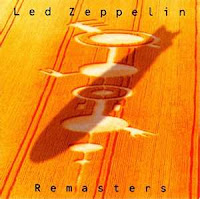AL-ALAQ KEMBALI LAGI
THE BLOOD CLOT RETURNS AGAIN
Johan Ishak
12 May 2015

This is one of the works done for the Al-Alaq series (as shown in the images on the Left). Al-Alaq is the 96th
sura or chapter of the
Qur'an. It is composed of 19
ayat (verses or "signs"), and is traditionally believed to have been revealed at
Mecca at cave
Hira. It is sometimes also known as Sūrat al-Iqrā ("Read"). The first five verses of this sura are believed by nearly all sources to be the first verses of the Qur'an to be revealed to the Islamic prophet
Muhammad. The linguistic definition of
′alaq' is "
leech", "
medicinal leech", "coagulated blood", "blood clot", or "the early stage of the embryo".
′Alaq' is also a derivative of '
alaqa' which means "attached and hanging to something." The term
′alaqah' is the second stage of human prenatal development (sura
Al-Mu’minoon 23: 12-14) which "descriptively encompasses the primary external and internal features" of the early embryo. The term
′alaqah' also occurs in several languages related to
Arabic. In
Hebrew there is 'alûqāh' (or alukah), the generic name for any blood-sucking worm or leech, and in
Aramaic and
Syriac there are words with apparently similar meanings. This sura has two parts: the first part consists of vv. 1-5, and the second of vv. 6-19. About the first part a great majority of the Islamic scholars are agreed that it forms the first revelation to be sent down to prophet Muhammad in 610. In this regard, the Hadith from
Aisha, which
Ibn Hanbal,
Bukhari,
Muslim and other traditionists have related with several chains of authorities, is one of the most authentic Hadith on the subject. In it Aisha narrates the full story of the beginning of revelation as she herself heard it from Muhammad. Besides, Ibn Abbas, Abu Musa al-Ashari and a group of the Companions also are reported to have stated that these were the very first verses of the Quran to be revealed to Muhammad. The second part was composed later, when Muhammad began to perform the prescribed prayer in the precincts of the
Kaaba, and
Abu Jahl tried to prevent him from this with threats.
The English translation of Al-Alaq is as follows:
1. Read! In the Name of your Lord, Who has created (all that exists),
2. Has created man from a clot (a piece of thick coagulated blood).
3. Read! And your Lord is the Most Generous,
4. Who has taught (the writing) by the pen [the first person to write was Prophet Idrees (Enoch)],
5. Has taught man that which he knew not.
6. Nay! Verily, man does transgress all bounds (in disbelief and evil deed, etc.).
7. Because he considers himself self-sufficient.
8. Surely! Unto your Lord is the return.
9. Have you (O Muhammad) seen him (i.e. Abu Jahl) who prevents?,
10. A slave (Muhammad) when he prays?
11. Tell me, if he (Muhammad) is on the guidance (of Allah)?
12. Or enjoins piety?
13. Tell me if he (the disbeliever, Abu Jahl) denies (the truth, i.e. this Qur'an), and turns away?
14. Knows he not that Allah does see (what he does)?
15. Nay! If he (Abu Jahl) ceases not, We will catch him by the forelock,
16. A lying, sinful forelock!
17. Then, let him call upon his council (of helpers),
18. We will call the guards of Hell (to deal with him)!
19. Nay! (O Muhammad)! Do not obey him (Abu Jahl). Fall prostrate and draw near to Allah!
When read, I was fascinated by ayats (verses) 9 and 14 which reads "Have you seen him who prevents?" and "Knows he not that Allah does see?". This emphasises symbolic status of the sura (chapter) of the Holy Quran for being the first sura to be revealed to Prophet Muhammad and to mankind. The sura was revealed to Prophet Muhammad by Angel Jibrail (Gabriel) when he (Muhammad) was not even aware that he has been appointed by Allah (God). Therefore, this sura is the only sura revealed to Prophet Muhammad before he knew he is a prophet. So strong is the relevance of this sura that I have noticed ayats 9 ad 14 to be acknowledged as the key points as they portray the essence of the sura in the context of enlightening mankind to the existence of God - by suggesting the idea of the threat of rejection of Prophet Muhammad by Abu Jahl, a prominent Arab Aristocrat, or any man at all (or even Muhammad himself), but in the end, Muhammad triumph (as a prophet), for which, only Allah (God) Himself knew best, and well in advance of this (referring the the 2nd leg that says "Knows he not that Allah does see?"



















